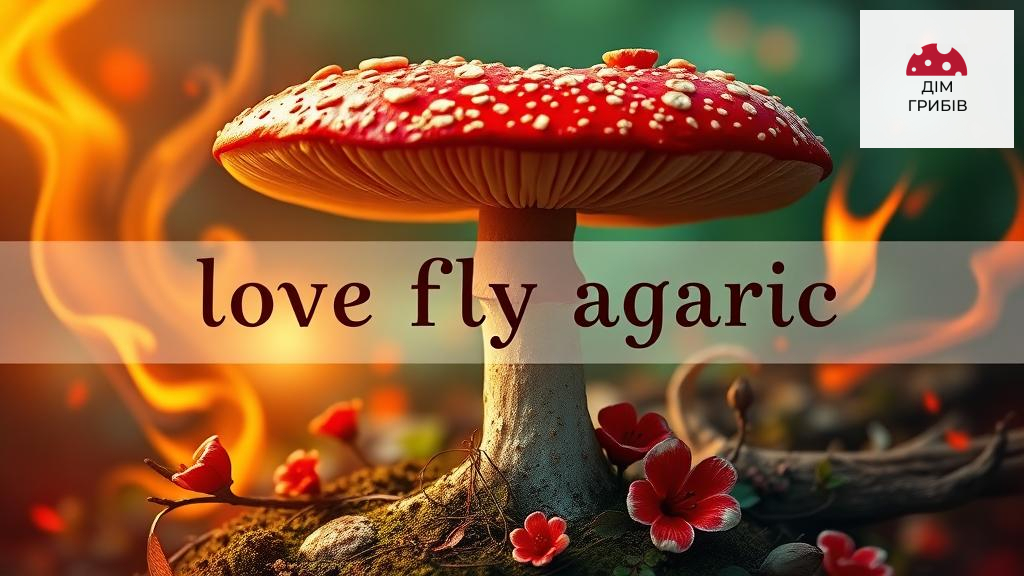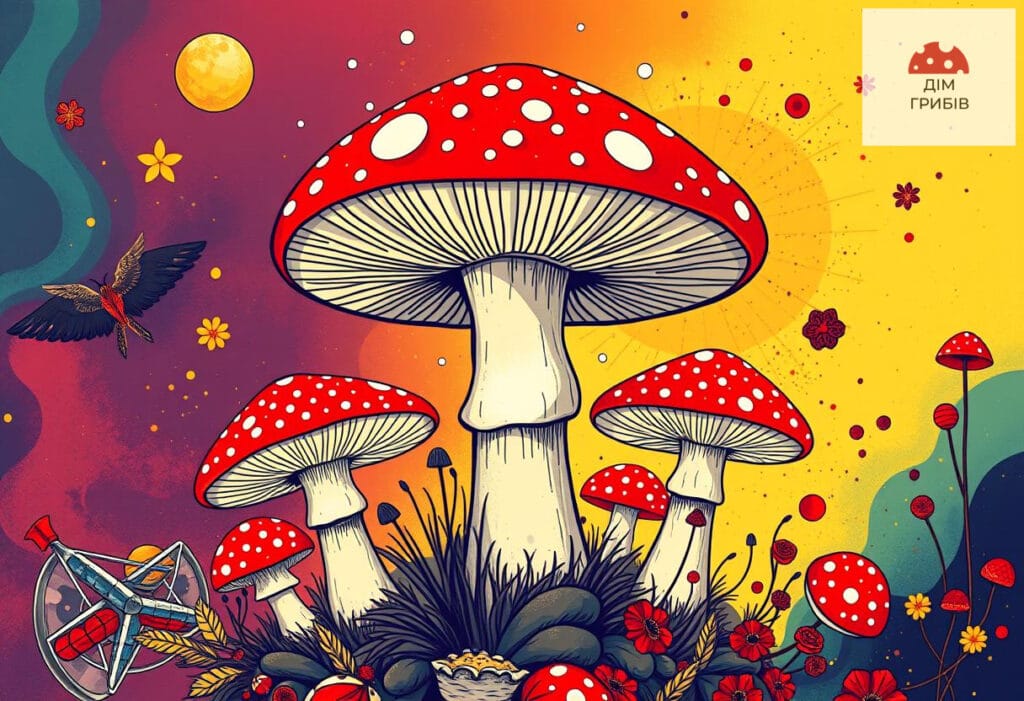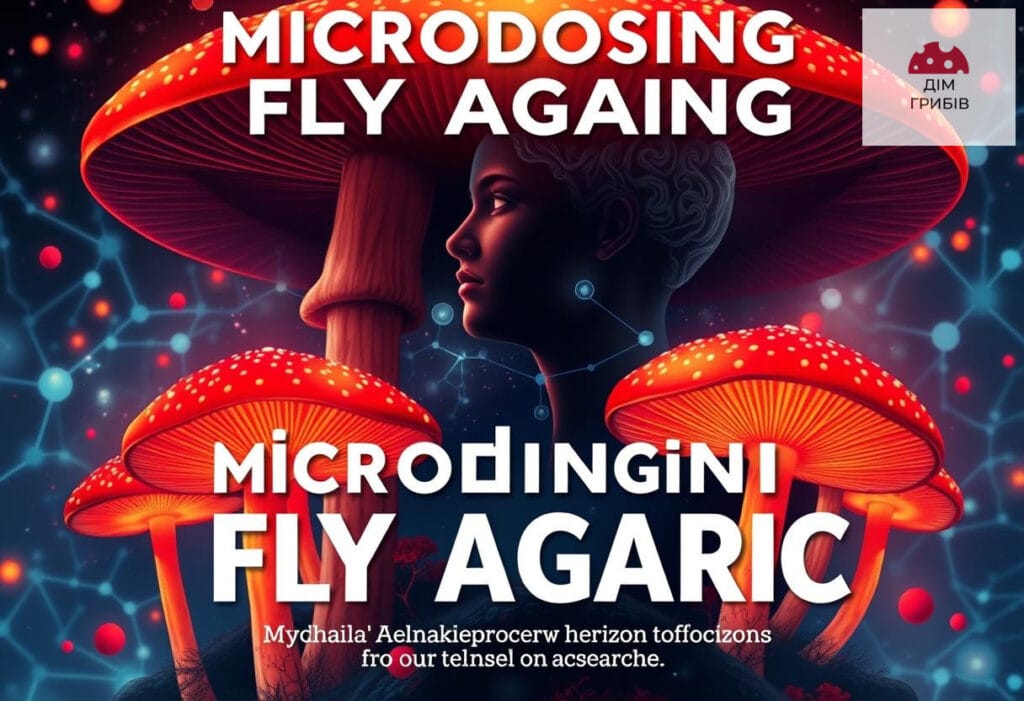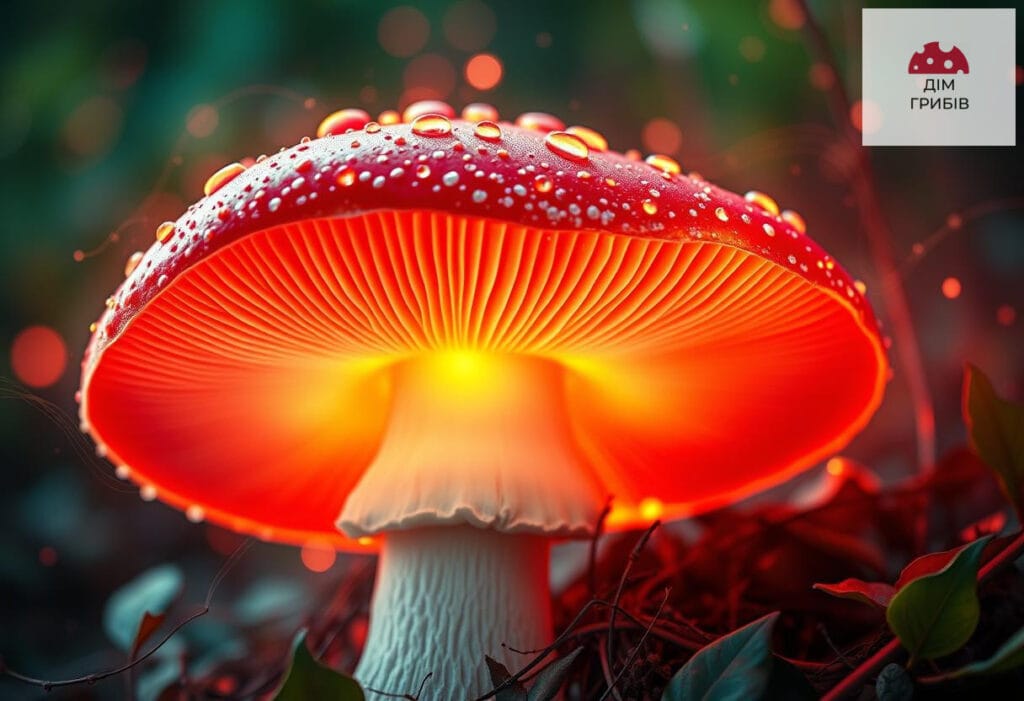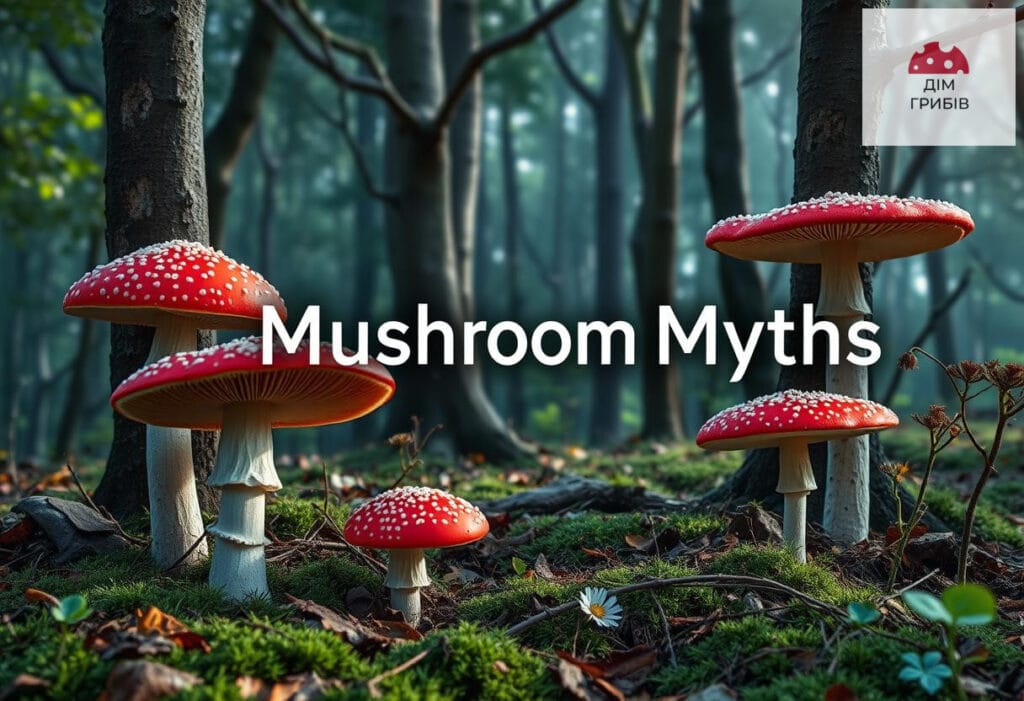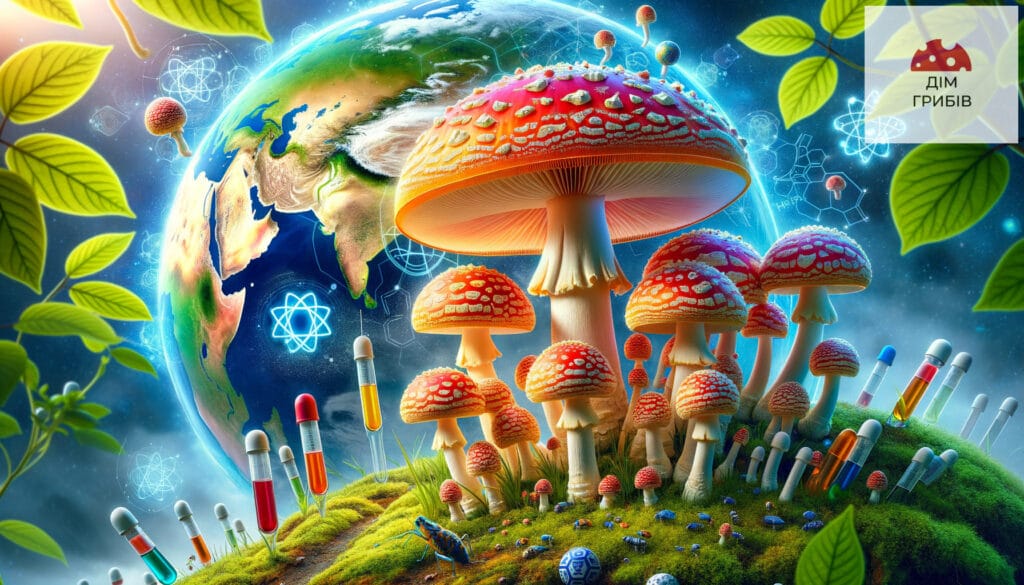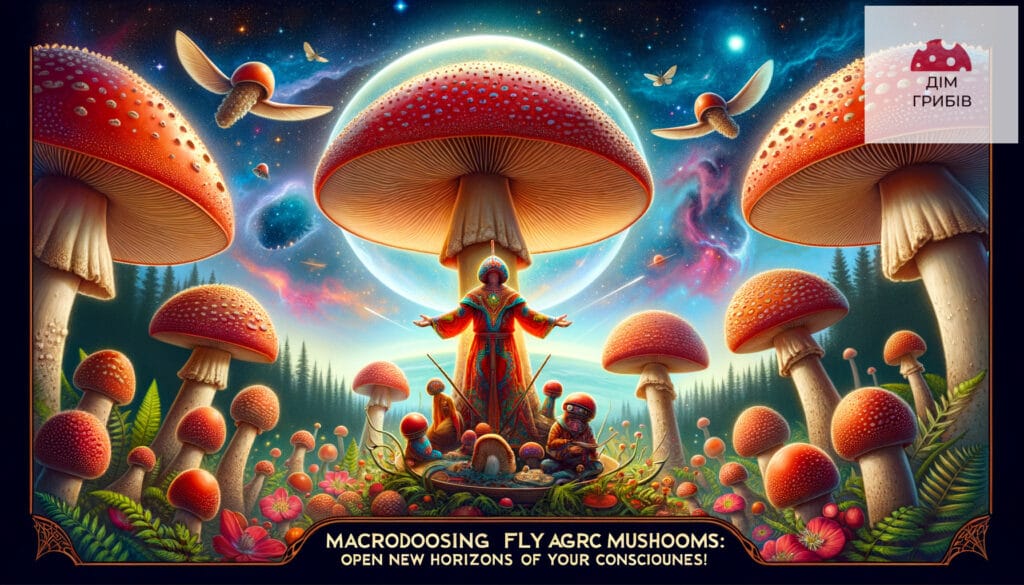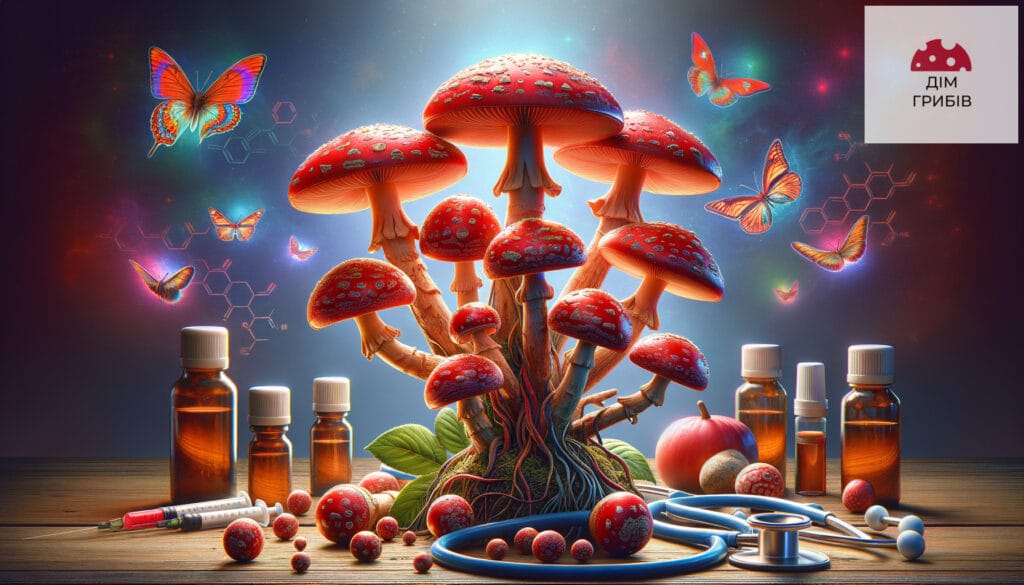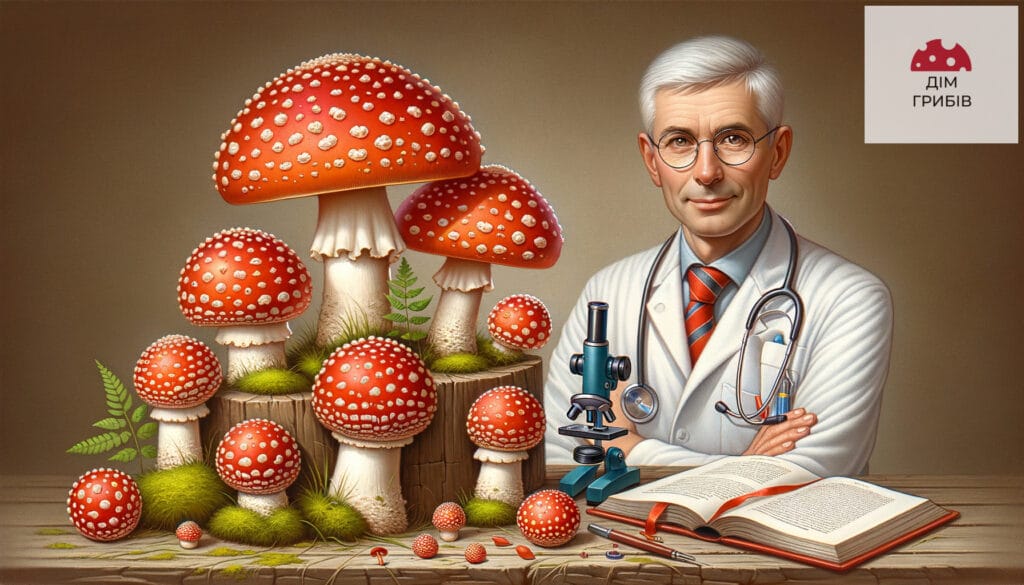Toadstools and Transformation: Discover a Mysterious World That Leads You to New Experiences

Amanitas and transformation in human consciousness.
Fly agarics, or Amanita muscaria, occupy a special place among the mushrooms of the world. Their bright red caps with white spots are not only striking in their beauty, but also evoke numerous associations with fairy-tale plots and magic. However, what interests researchers more is their deep history in the culture and mythology of many peoples. Fly agarics are perceived as guides to another world, which can change consciousness and contribute to the transformation of the perception of reality. In this material, we will delve deeper into the topic of fly agarics, exploring their transformative effects, symbolism, scientific research and their impact on culture.
What are Amanitas?
Fly agarics are mushrooms of the genus Amanita, which belong to the family Amanitaceae. Their characteristic features, including the bright color of the cap and the presence of white dots, make them easily recognizable. On the outside, fly agarics may look attractive, but inside they hide powerful psychoactive substances.
In Ukraine, fly agarics can be found in almost all regions, especially in coniferous and mixed forests, from mid-summer to early autumn. In addition to their aesthetic appeal, fly agarics have a strong influence on consciousness, which they can cause the following effects:
- Hallucinations.
- Changes in perception of reality.
- Feeling an emotional ups and downs.
Toadstools and transformation
Amanita muscaria and transformation in human consciousness. The main active compounds are muscimol and ibotenic acid, which interact with neurotransmitters in the brain, especially GABA receptors. This can lead to changes in the perception of reality and the emergence of strong emotions, so it is important to know their effects before taking amanita muscaria.
| Compound | Effect |
|---|---|
| Muscimol | Causes relaxation and changes in consciousness. |
| Ibotenic acid | May lead to hallucinations and altered perception. |
It is no coincidence that fly agarics are often associated with rituals related to communicating with spirits. In particular, in Scandinavian myths and ancient cultures they were used to achieve trance states that open doors to the other world. Many shamans used fly agarics in their practices to connect with otherworldly forces.
Historical context of the use of fly agarics
The history of the use of fly agarics can be traced back to many civilizations. For example, the northern peoples, such as the Tele and Sami, believed that the mushroom had the ability to influence consciousness, providing the opportunity to communicate with ancestors. Fly agarics were used not only for rituals, but also for the treatment of various ailments, which emphasizes their importance in society.
Scientific research on fly agarics
Scientific research on fly agarics has intensified in recent decades. Scientists aim to study their chemical composition and impact on the human psyche. The main research topics are:
- Study of muscimol and its effects on the central nervous system.
- Individual differences in the perception of fly agarics.
- Therapeutic potential in the treatment of post-traumatic stress disorder.
In the context of healthcare, the prospects for using fly agarics are becoming increasingly relevant. Many mycologists in Ukraine and abroad are striving to find ways to use fly agarics in modern medicine.
Fly agarics in culture and art
Amanitas have a significant role in cultural contexts. They are often depicted in painting, literature, and cinema as symbols of magic and mystery. For example, in the works of figures such as Salvador Dali, amanitas become a symbol of travel to another world.
In addition to artistic depictions, fly agarics find their place in popular culture, where they are often chosen as a stimulus for writing creative works or composing music. They are integrated into the plots of fairy tales, in particular "Alice in Wonderland", where mushrooms are important in the development of the plot.
Transformation with the help of fly agarics
The transformation associated with the use of fly agarics can have both positive and negative consequences. The use of fly agarics should be considered with caution, taking into account the potential risks and individual reactions to their active substances. The main aspects to consider are:
- Individual sensitivity to psychoactive components.
- Knowledge of correct mushroom identification.
- Symptoms of possible poisoning and methods of treatment.
Before experimenting with fly agarics, it is recommended to consult with specialists or have enough knowledge to avoid unwanted consequences.
Toadstools in the modern world
Today, fly agarics are attracting the attention not only of mycologists and psychiatrists, but also of the general public. Documentaries, articles and studies devoted to these mushrooms are appearing. Many people are trying to learn new methods of using them while observing safety.
Research is also trying to find the best ways to use fly agarics in the treatment of mental disorders. More and more mental health professionals are paying attention to the potential of fly agarics in therapy.
Hallucinations and spiritual enrichment
The use of fly agarics can induce a variety of hallucinations, which many people describe as an experience of moving into another dimension. Reviews show that such experiences are often accompanied by profound emotional changes and spiritual enrichment.
Ecological aspects of fly agarics
Ecologically, fly agarics are important elements of forest ecosystems. They act as detritivores, participating in the decomposition of organic materials. This contributes to the health of forest ecosystems. Human interference can threaten these important natural balances.
Psychoactive properties and their uses
Due to their psychoactive properties, fly agarics are of interest not only to mushroom enthusiasts but also to medical professionals. There are suggestions that fly agarics may be used to treat depression, neuroses, and other mental disorders.
Amanitas in popular culture
The importance of fly agarics in popular culture is hard to overstate. They are often depicted as symbols of magic and mysticism, appearing in fantasy literature, where their magical properties are used to create intricate and captivating plots.
Current research and prospects
Researchers continue to study fly agarics, trying to understand how their active components can help develop new therapeutic approaches. Numerous studies are already underway in Ukraine, aiming to identify potential medical uses for fly agarics that are safe.
Amanitas and their role in self-knowledge
Studying fly agarics can lead to significant changes in one's perception of oneself. Users often claim that their experiences with fly agarics help them to reexamine their attitude towards life. These new states of consciousness can lead to deeper self-discovery.
Literature and educational materials about fly agarics
For those seeking knowledge about fly agarics, there is a wealth of literature covering their properties, cultural significance, and methods of use. It is recommended to consult scientific articles, university studies, and professional opinions. Authoritative sources such as Mycology Research Institutes and NCBI, can provide structured information for detailed study of the topic.
Conclusions of fly agaric research
Research on fly agarics opens up new perspectives in understanding consciousness and cultural traditions. Their potential in the treatment of mental disorders and in spiritual practices are topics that require deeper study. However, safety and responsibility must remain in the first place when interacting with such a complex natural substance as fly agarics. It is important to have knowledge and exercise caution, because fly agarics can be an achievement not only in science, but also in personal self-development.
